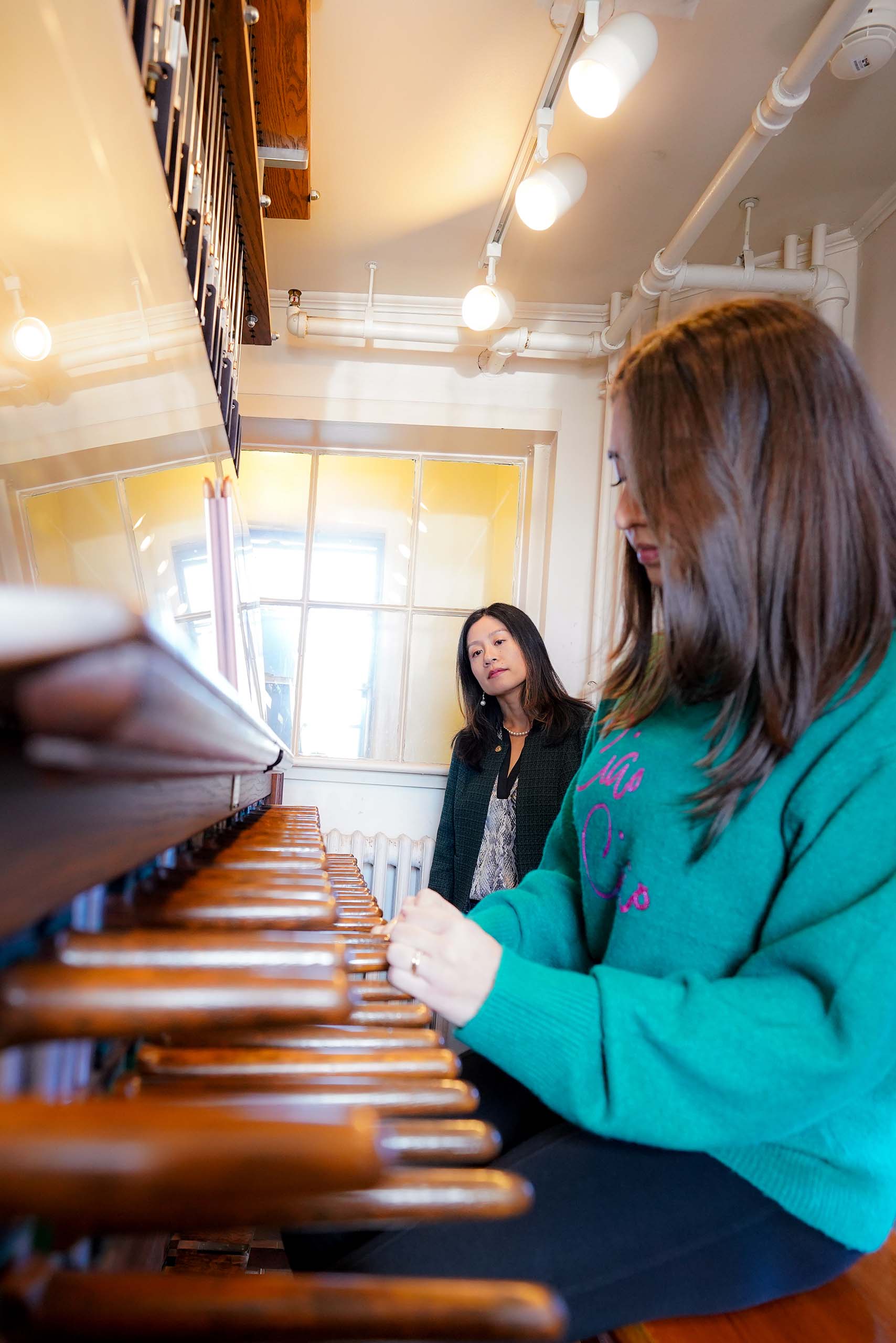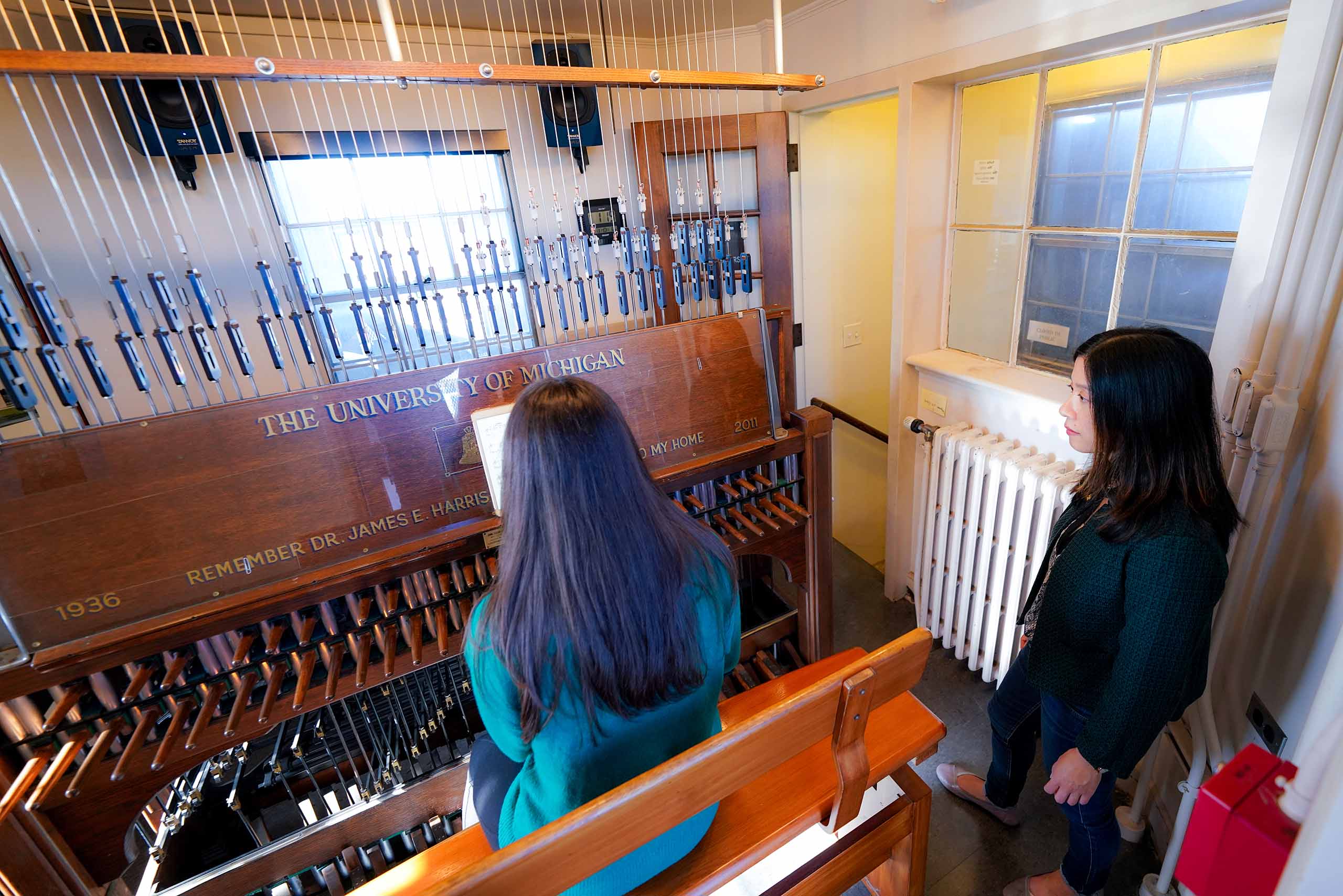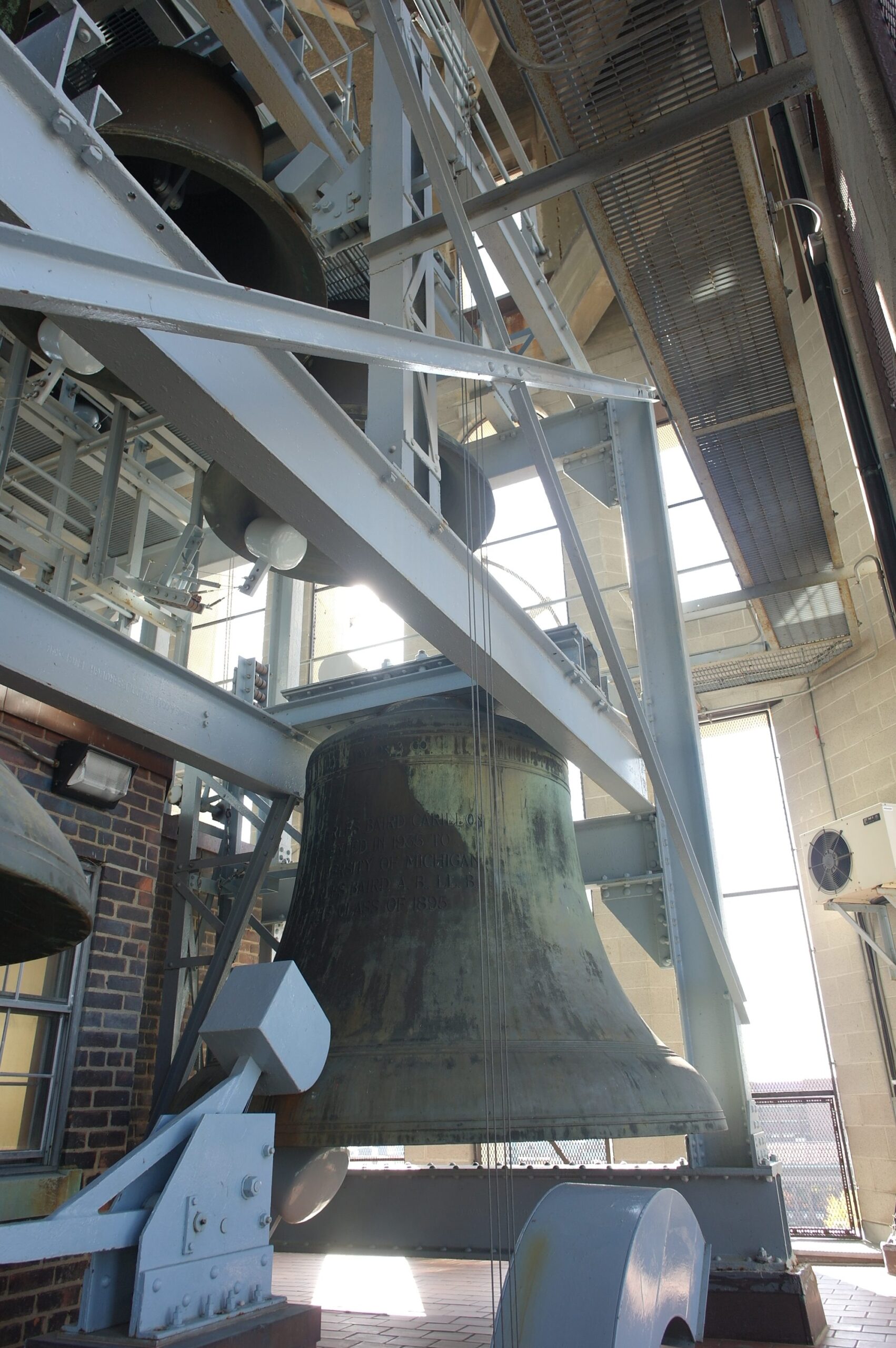Charles Baird Carillon
The Charles Baird Carillon, third heaviest in the world, contains 53 bronze bells cast by John Taylor & Co. in Loughborough, England. The largest bell, which strikes the hour, weighs 12 tons, while the smallest bell, 4½ octaves above, weighs just 15 pounds. In 2011, the carillon underwent a restoration to return the original highest two octaves of bells and original keyboard.
History
Charles Baird, the University of Michigan’s first athletic director, donated the carillon. The iconic Burton Memorial Tower on Ingalls Mall, built with funds donated by hundreds of Ann Arbor community members, is named for former University president Marion Leroy Burton. The tower and its carillon were dedicated in 1936.
In celebration of the University’s bicentennial, the tower floodlights were replaced with a new system that illuminates Burton Tower and its carillon from within, with more than 100 LED bulbs that can be programmed in a multitude of colors.
The University added a second carillon in 1996. The Ann and Robert H. Lurie Carillon of 60 bells stands on the Eda U. Gerstacker Grove on North Campus.
Visiting the Baird Carillon
Thirty-minute recitals are performed on the Charles Baird Carillon at noon every weekday that classes are in session, followed by visitor Q&A with the carillonist from 12:30–12:45 pm. There are no open recitals on campus holidays, study days, or final examination days. An online schedule of recitals, rehearsals, and instructional playing time on the Baird Carillon is available on Google Calendar.
The bell chamber may be accessed via a combination of elevator and stairs. Take the elevator to the highest floor possible (floor 8), and then climb two flights of stairs (39 steps) to the bell chamber (floor 10). Earplugs are available from the carillonist upon request. Be prepared to walk on ice and snow in the bell chamber during winter.
Built in 1936, the Charles Baird Carillon is not ADA accessible. Visitors with mobility concerns are invited to visit the ADA-accessible Lurie Carillon.
Streaming Media & Downloads
- Soundcloud Playlist
- YouTube Channel
- Carillon Lullabies (free downloadable U-M carillon coloring book; the site also includes a downloadable carillon album exclusive to Ann Arbor District Library users)
- Annotated Bibliography of African American Carillon Music
- Bibliography of Carillon Music by Women, Transgender, and Nonbinary Composers
The Westminster Quarters
This melody is played daily on five of the heaviest Baird Carillon bells, each quarter hour from 9:15 AM until 9:00 PM. The first downloadable audio file contains the last part of the hour strike melody and the bourdon (largest, 12-ton) bell striking the hour twice. The second audio file contains the complete Westminster Quarters and twelve strikes at noon. Both files are available under the Creative Commons Attribution 4.0 International License.
What is a carillon?
A carillon is a musical instrument consisting of at least two octaves of bells arranged in a chromatic series and played from a keyboard and pedalboard that permits control of expression through variations of touch. A carillon bell is a cast bronze cup-shaped bell whose overtones are in such harmonious relationship to each other as to permit multiple bells to be sounded together.
The carillon developed in the area of Europe that is now the Netherlands, Belgium, and northern France in the 15th and 16th centuries. Carillons have since been built on every continent except Antarctica. There are over 180 carillons in North America, and new ones are installed almost yearly.
The carillon keyboard, located in an enclosed room in the bell chamber, is connected to the bells via a system of wires, levers, and springs. To play the bells, a carillonist uses loosely-closed fists to push down wooden keys, which are arranged like the keys on a piano. The lowest bells may also be played from a pedal keyboard. No electricity is required for the functioning of this system.
The U-M Music Library offers an online carillon research guide. A worldwide directory of carillons and an 8-minute video explainer about carillons is available from the World Carillon Federation.
Carillon Instruction
Students learn to play on carillon practice keyboards that are not audible beyond the practice room. Current students interested in carillon lessons, please visit the carillon studio page.
Land Acknowledgement
The Department of Organ acknowledges that Burton Memorial Tower and its carillon physically and sonically occupy land stewarded by Niswi Ishkodewan Anishinaabeg—the Three Fires People, who are the Ojibwe, Odawa, and Potawatomi—along with their neighbors the Seneca, Delaware, Shawnee, and Wyandot nations. We further acknowledge that our university stands, like almost all property in the United States, on lands obtained, generally in unconscionable ways, from Indigenous peoples. We recognize Michigan’s 12 federally recognized Native Nations, historic Indigenous communities in Michigan, Indigenous individuals and communities who live here now, and those who were forcibly removed from their homelands. In offering this land acknowledgement, we affirm Indigenous sovereignty, history, and experiences.



